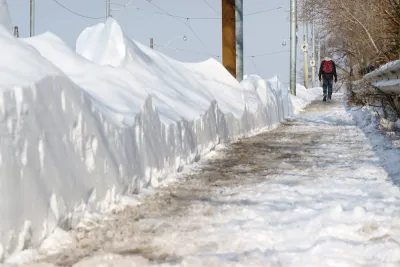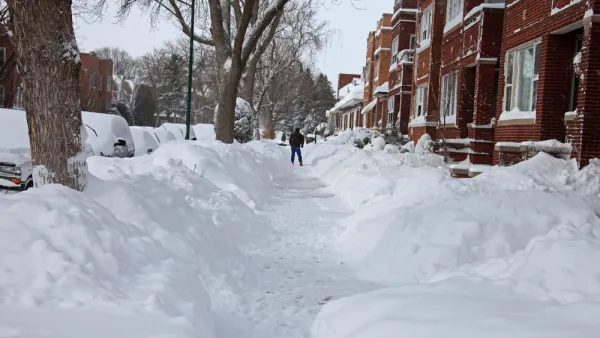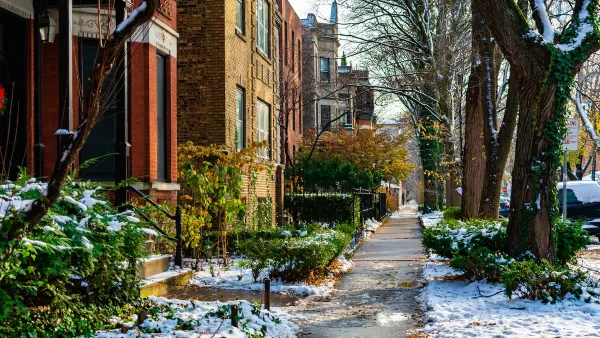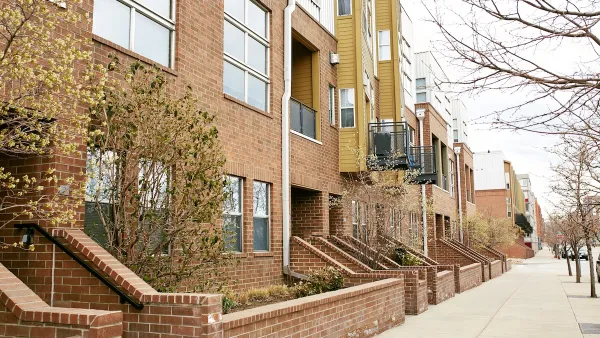When snow is not cleared from sidewalks, pedestrians face significant hazards and they are less inclined to walk.

In many U.S. cities, snow removal on sidewalks is the responsibility of property owners, an odd system where private citizens maintain public infrastructure, writes Amy Crawford.
When property owners are negligent or lack the physical or financial capabilities to clear their sidewalks, an entire block can become impassable. "For pedestrians, the result is an obstacle course of icy goat trails, towering snow piles, and puddles of slush," says Crawford.
But when cities plow streets and neglect sidewalks, driving gets priority over other modes. Some municipalities have taken on the responsibility of keeping sidewalks clear.
Crawford says that encouraging residents to use more sustainable modes of transportation, such as walking, is meaningless if safe, accessible infrastructure is not available during a significant part of the year.
In Ann Arbor, Michigan, for example, the city council set a carbon neutrality goal that would require people to drive less. "But here, and in others cities across America, efforts to nudge people out of their cars were once again seemingly forgotten as soon as the flakes started falling this winter. It’s then, as plows head out to clear and salt major arterial roadways, that a city’s true priorities are revealed," adds Crawford.
FULL STORY: The Way a City Handles Snow Says Everything About How It Treats Pedestrians

National Parks Layoffs Will Cause Communities to Lose Billions
Thousands of essential park workers were laid off this week, just before the busy spring break season.

Retro-silient?: America’s First “Eco-burb,” The Woodlands Turns 50
A master-planned community north of Houston offers lessons on green infrastructure and resilient design, but falls short of its founder’s lofty affordability and walkability goals.

Delivering for America Plan Will Downgrade Mail Service in at Least 49.5 Percent of Zip Codes
Republican and Democrat lawmakers criticize the plan for its disproportionate negative impact on rural communities.

Test News Post 1
This is a summary

Test News Headline 46
Test for the image on the front page.

Balancing Bombs and Butterflies: How the National Guard Protects a Rare Species
The National Guard at Fort Indiantown Gap uses GIS technology and land management strategies to balance military training with conservation efforts, ensuring the survival of the rare eastern regal fritillary butterfly.
Urban Design for Planners 1: Software Tools
This six-course series explores essential urban design concepts using open source software and equips planners with the tools they need to participate fully in the urban design process.
Planning for Universal Design
Learn the tools for implementing Universal Design in planning regulations.
EMC Planning Group, Inc.
Planetizen
Planetizen
Mpact (formerly Rail~Volution)
Great Falls Development Authority, Inc.
HUDs Office of Policy Development and Research
NYU Wagner Graduate School of Public Service





























